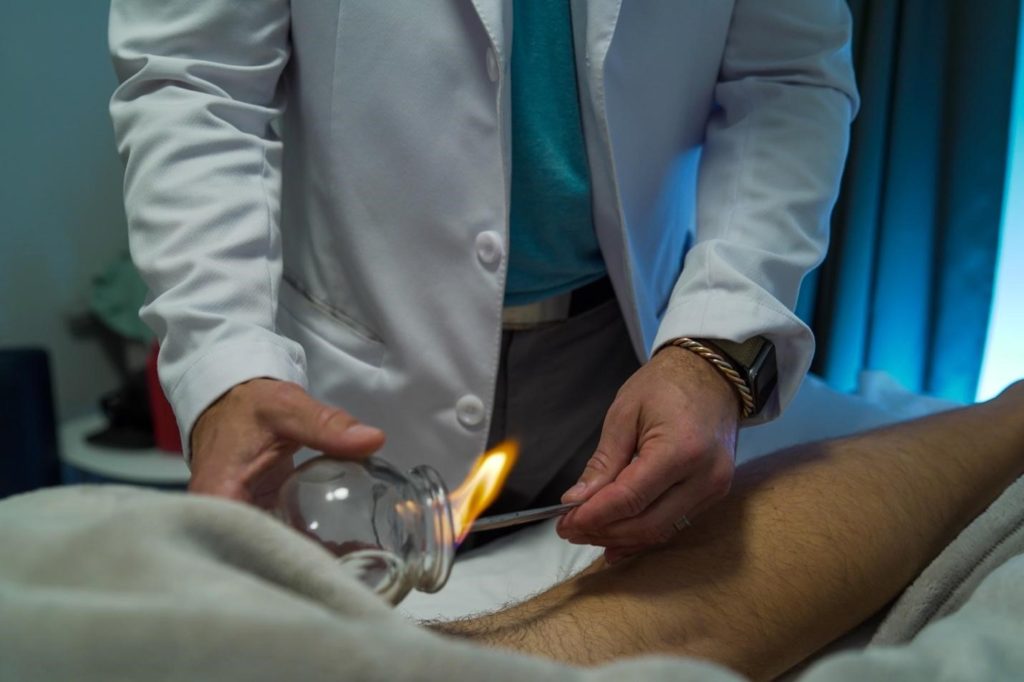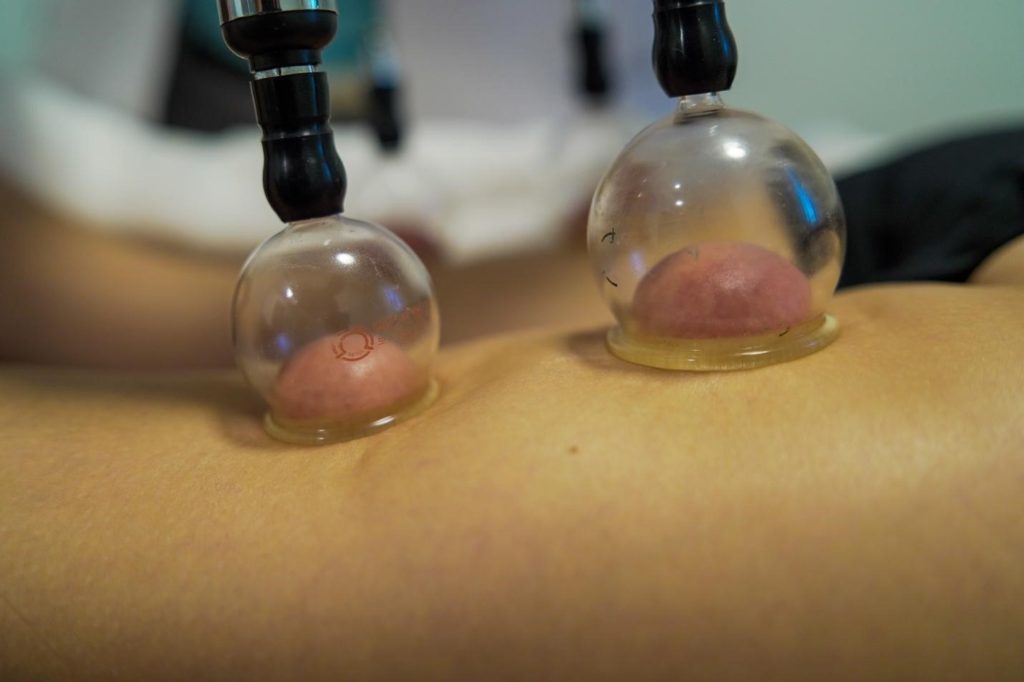


A new patient cupping experience includes a 15-minute initial exam with a 30 minute cupping treatment.
The initial exam consists of a health history and physical exam that includes blood pressure and heart rate check, a radial artery pulse check, tongue and abdominal evaluation. A returning patient cupping experience includes a brief exam with a 30-minute cupping treatment.
Cupping is performed as a stand alone service or added to your acupuncture experience.
Cupping is the placement of small glass cups as suction devices placed on the skin to disperse and break up stagnation, increase blood flow, and decrease myofascial tension and pain. CBD pain cream, Chinese herbal pain cream or lotion is placed on the skin for lubrication prior to cup placement to prevent skin irritation.
There are two ways to create pressure with cupping; fire cupping or using a pump. Fire cupping creates the suction with a cotton ball and forceps placed inside the cup. Flames are never used near the skin but are a means to create the heat that causes the suction within the small cups. Suction created with a pump is the most common. Our cups are made from glass and have soft edges to allow for sliding and comfort.
Cupping is used to relieve pain and muscle tension and detox your tissues. Cupping is one of the best deep-tissue therapies available. It is thought to affect tissues up to four inches deep from the external skin. Toxins can be released, blockages can be cleared, and veins and arteries can be refreshed within these four inches of affected materials. Even hands, wrists, legs, and ankles can be ‘cupped,’ thus applying the healing to specific organs that correlate with these points. Cupping is also valuable to help strengthen the lungs and can clear congestion from a common cold or help to improve a person’s asthma.
In fact, respiratory conditions are one of the most common maladies that cupping is used to relieve. Cupping’s detoxifying effect on skin and circulatory system is also significant, with a visible improvement in skin color after a series of treatments. Cupping removes toxins and improves blood flow through the veins and arteries. Cupping is especially helpful for athletes trying to relieve muscle spasms. Cupping also affects the digestive system.
A few benefits include an improved metabolism, relief from constipation, a healthy appetite, and stronger digestion. A 2015 report published in the Journal of Traditional and Complementary Medicine noted cupping as an effective alternative method of treating acne, pain, facial paralysis, cervical spondylosis, and herpes zoster.
Monday – Thursday
9:00am – 8:00pm
Friday
9:00am – 6:00pm
Saturday
10:00am – 4:00pm